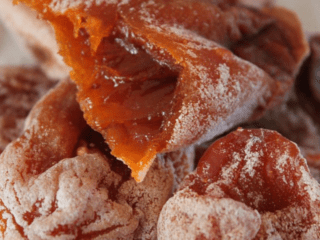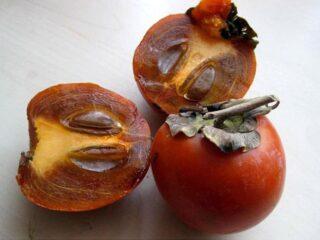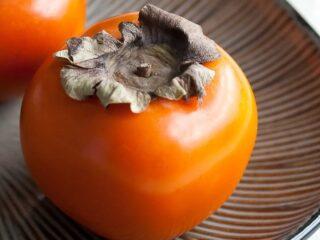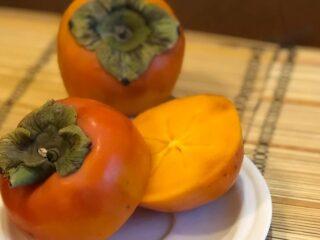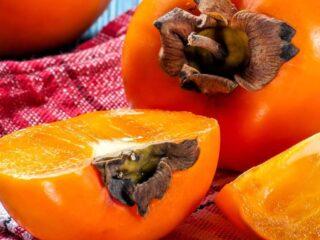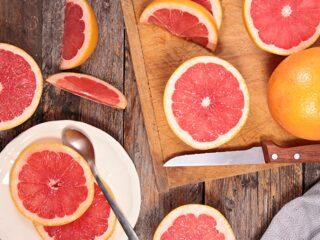Content
The opinions of nutritionists and pediatricians are divided on the age at which persimmons can be given to children. Some believe that a child can be introduced to berries no earlier than six years of age. Others strongly recommend introducing fruits rich in vitamins and microelements into the diet from the age of three.
The benefits of persimmon for a child
Persimmon is a low-calorie food and contains large amounts of vitamins A and C.
Benefits of the fruit:
- It will help cope with diarrhea, as it has fixative properties.
- The product contains natural sugars, which has a positive effect on brain activity.
- 100 g of fruit contains the daily requirement of vitamin C.
- The chemical composition includes a large number of useful micro- and macroelements.
- The fruit is rich in vitamin A, which is necessary for the active growth of the child. It supports the organs of vision.
- Increases the body's protective functions, improves kidney and thyroid function.
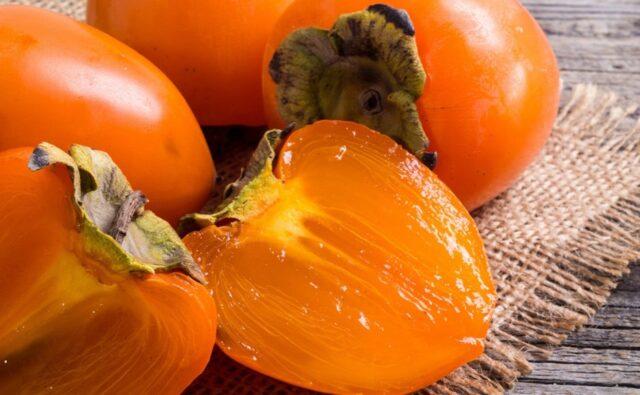
In winter, the berry provides the child's body with organic acids, carbohydrates and fiber.
How can persimmons be dangerous?
Despite the undeniable benefits, the berry can cause harm to a fragile child’s body. Even a healing medicine, if the dosage is exceeded, causes more harm to the body. If there are contraindications, then it will not be possible to avoid a negative, unpredictable effect.
Why is the berry dangerous?
- Taking persimmon and milk at the same time causes diarrhea in infants.
- It is a strong allergen, reactions to it are very common. Children develop rashes, and Quincke's edema occurs less frequently.
- If a child has a tendency to constipation, giving him the fruit is contraindicated. An unripe specimen, which contains more tannin than a ripe one, is especially dangerous.
- If you start giving the berries too early, you can cause intestinal obstruction.
Due to the large amount of carbohydrates, the product is contraindicated for children with diabetes.
At what age can you give persimmon to a child?
Nutritionists do not recommend introducing persimmon into complementary foods for children under one year of age. Most pediatricians recommend giving birth to children no earlier than three years of age. By this age, the digestive system has already matured and is suitable for normal digestion of food. When a child experiences abnormalities in the gastrointestinal tract, berries can be included in the diet no earlier than five years of age.
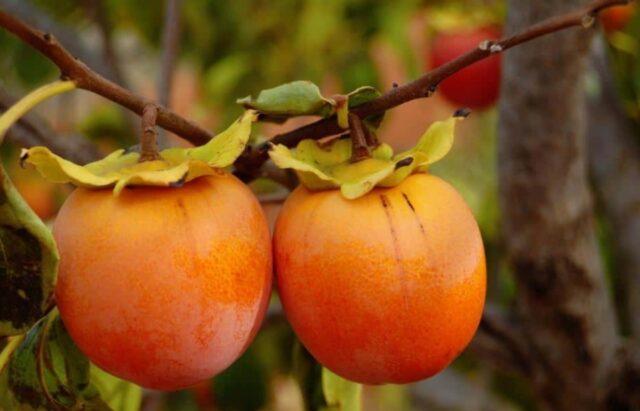
Some foreign nutritionists advocate that the fruit should not be given to children under 8-9 years of age
Rules and regulations for eating persimmons for children
Persimmon is rich in vitamins and microelements, improves the body's resistance to viral infections, but you should not get carried away with it. The product has a calming effect and is recommended to be given to capricious children. Due to the high content of glucose and sucrose, it is better to consume it in the first half of the day; in no case should you eat it after 17.00.
How often to give
Children begin to be given the product with several pieces. At first, it is recommended to peel it. If there are no allergic reactions, the portion is increased. A child from 3 to 5 years old is given no more than one berry per day; at 9-10 years old, a child can eat two pieces per day.
In what form to give
Fresh persimmons contain the most vitamins, so it is best to introduce them into complementary foods without heat treatment. A puree is prepared from the pulp of the product. The berries are added to salads, baked goods, and homemade yoghurts. Depending on the child’s preferences, jam, pastille, and marmalade are prepared.

If your baby does not like fresh fruits, he should be offered dried ones.
How many persimmons can a child eat?
For the first time, it is recommended to give children no more than 10 g of persimmon. The product is added to the porridge. The child's reaction is monitored throughout the day. If no allergic manifestations are detected, the berries are added gradually.
Combination with other products
Persimmons are included not only in desserts, but also in meat and even fish dishes.
Under the influence of gastric juice, they cause bloating and then diarrhea. You should also not drink cold water. The body's reaction will be similar.
Fermented milk products go well with berries. They add an unusual taste to yogurt and cottage cheese.
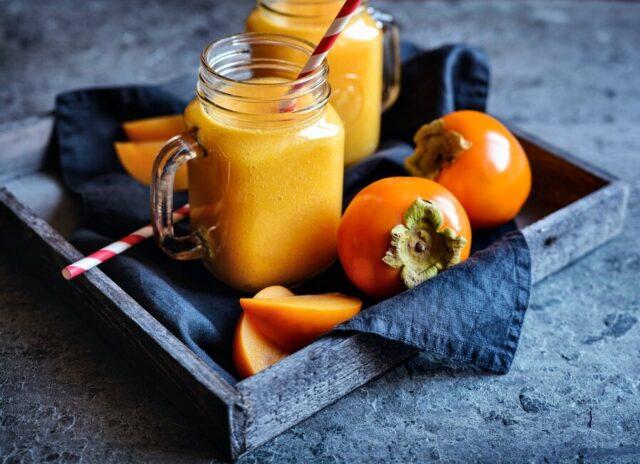
You can water the berry slices with honey, preferably flower honey.
Sweet persimmon gives a harmonious taste in fruit slices. It goes well with pears, apples, bananas, and feijoas. Salad with ham and soft cheese dressed with olive oil gives an unusual flavor.
Contraindications
Persimmon is an allergenic product that is strictly forbidden to be given to children under two years of age.
For whom fruits are contraindicated:
- children who suffer from frequent urination;
- those who are prone to constipation;
- people with diabetes;
- children predisposed to obesity.
Rules for choosing persimmons for a child
For children, choose ripe specimens that have a bright orange color. The fruits should not have black spots or other signs of rotting product. You should not buy berries that are too soft, because they should be given to your child after peeling them.
Persimmon recipes for children
Persimmons are consumed not only fresh. It is added to dishes that children love.
Cheesecakes with persimmons
The correct name of the dish is cottage cheese. The most popular additions to it are dried apricots, apples, and raisins. With persimmons the dish acquires an original flavor.
Ingredients:
- persimmon – 800 g;
- cottage cheese – 500 g;
- sour cream – 250 g;
- breadcrumbs – 125 g;
- sugar – 50 g;
- salt - a pinch;
- wheat flour – 125 g;
- vegetable oil – 80 ml.
Recipe:
- Wash the berries thoroughly and cut off the skin. Cut into small pieces.
- In a bowl, mix cottage cheese with salt and sugar, add flour. The mass is thoroughly ground so that there are no lumps, chopped persimmon is added to it.
- Small cheesecakes 1-1.5 cm thick are formed from the resulting dough.
- Before placing on a baking sheet, the cheesecakes are rolled in breadcrumbs.
- The product is sent to an oven preheated to 220ᵒ. Bake for 10 minutes.
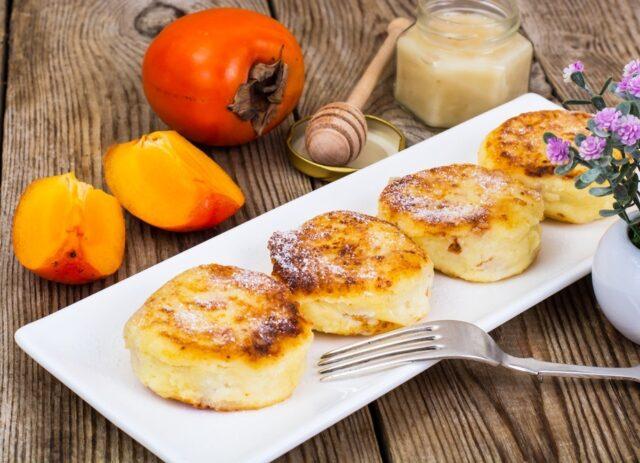
Children are served cheesecakes with sour cream
Persimmon mousse
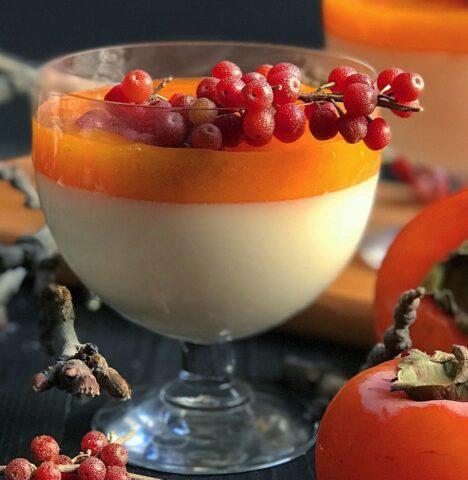
Children love a sweet dessert made from whipped chocolate or milk mass.
Fruit mousses are also popular.
Ingredients:
- persimmon – 240 g;
- water – 500 ml;
- sugar – 350 g;
- citric acid – 1 g;
- gelatin – 15 g.
How to cook:
- The tropical berry is washed, peeled, and seeds removed.
- The fruit is cut into 4 parts, placed in a saucepan, and filled with acidified water.
- Product within 15 min. simmer over low heat. Then grind through a fine sieve and filter again.
- The resulting puree is combined with the broth, gelatin and sugar are added, and brought to a boil.
- The resulting mousse is filtered again and cooled to a temperature of 30-35ᵒ.
- Place the container with the mixture on ice and beat until a thick foam is obtained.
The mousse is poured into small bowls or glasses and placed in the refrigerator to harden.
Fruit cookies with persimmon
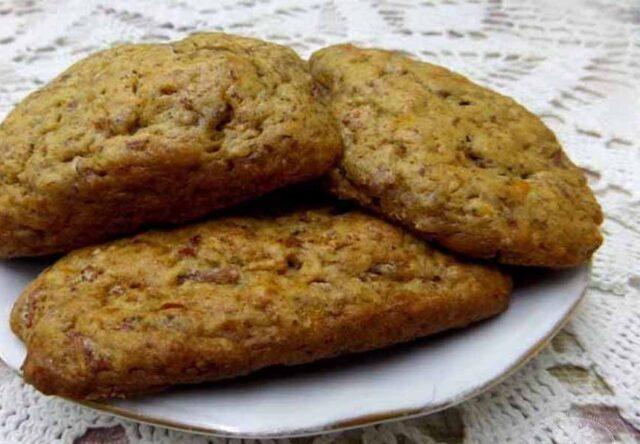
With the addition of persimmon, cookies acquire a unique taste.
To prepare the dish, choose a ripe, soft fruit.
Ingredients:
- persimmon – 400 g;
- sugar – 200 g;
- flour – 400 g;
- egg – 1 pc.;
- butter – 100 g;
- baking powder – 2.5 g;
- ground cinnamon – 2.5 g.
Recipe:
- The fruit is washed, peeled, and the seeds are removed.
- Cut into small pieces and place in a blender bowl.
- The product is pureed.
- Place softened butter in a bowl, add egg and sugar, beat until smooth.
- Add the remaining ingredients and knead into a soft dough.
- The baking sheet is covered with baking parchment. Cookies are placed onto it using a pastry syringe (if you don’t have such a kitchen utensil, you can use a regular spoon).
Place the baking sheet for 15 minutes. into the oven, preheated to a temperature of 180ᵒ.
Conclusion
Nutritionists do not recommend giving persimmon to children under three years of age. To reduce the harm from eating berries, you must first freeze them. This will neutralize the effect of tannin and prevent intestinal obstruction.Children prone to constipation should not be given an exotic product.

